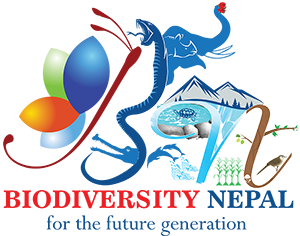Winters are the period of extreme cold and chilling weather. Everybody is wrapped around blankets, putting on heavy clothes, burning fires and keeping them super warm. In some places, people even experience snowfall with extremely low temperature, causing havoc leading to a difficult life.
Nature has itself kept a balance among every creature. Where we humans keep ourselves warm with all the necessary luxuries, animals don’t have access to these facilities. So how do they survive in the cold season? The answer is “Hibernation”. Every winter, animals who can’t tolerate coldness hide inside their shelter and hibernate.
Hibernation is a way animals conserve energy to survive adverse weather conditions or lack of food. Hibernation is not “just sleeping” but is undergoing drastic physiological changes. At this moment, animal’s metabolic activities, heart rate, breathing, and body temperature slow down and cool their bodies by 5-10⁰C. Even the animals have no idea what the outside temperature is, how early the sun is setting or the current state of food supplies. With the help of their biological clock, animals are ready to hibernate around the same time each year. Snakes, Hedgehogs, Frog, Turtle, Bears, Bees etc. are some common animals that hibernate.
Similarly, the frog that I often see in monsoon, hopping out of the holes, croaking louder noises seems to be lost during winter. Later, I realized that they go in hibernation to save energy and protect from coldness. Many changes occur during hibernation in frogs that we are unaware of, when the temperature goes below freezing, their body temperature goes below freezing. While ice crystals may form in some parts of the animal’s body, important parts have an elevated glucose level which acts as an anti-freeze, protecting vital tissue from freezing.

When preparing themselves to hibernate, not only frogs but also larger animals eat vast amounts of food to store as fat and smaller animals tend to store their food away. While some hibernate to store energy, others respond to food shortages.
Sometime during warmer temperatures, animals even come out of their shelters thinking the spring has already started. But this change in pattern is a problem for some reasons such as in case of bears, when they wake up early, there isn’t sufficient food and when they don’t find enough food they go around human populations prowling in rubbish bins and gardens for fodder. They even try to get enough food immediately after hibernation and when they can’t find food they go to the areas where humans have food and try to get that food.

Hibernation turns out to be advantageous as it is the best way of saving energy which helps hibernators to survive for several months on fat reserve alone. It also reduces the risk of predation. However, after hibernation animals can have low memory power, less immunocompetence, inhibition in sperm cell production which can be a drawback in hibernators. Despite the disadvantages, hibernation is a crucial part of animal life which helps them to survive during the minimal temperatures and eventually helps in growing the population.
Since the temperature is getting warmer and warmer, the hibernation period is shortening making hibernators active earlier than they do. This might be harmful for prey and ecosystem, leading to imbalance in nature. Being abnormally active can force them to use stored energy before they can replace it. Thus, we all humans must understand the chain of ecosystems and support in maintaining the balanced temperature on earth.


Comments are closed.